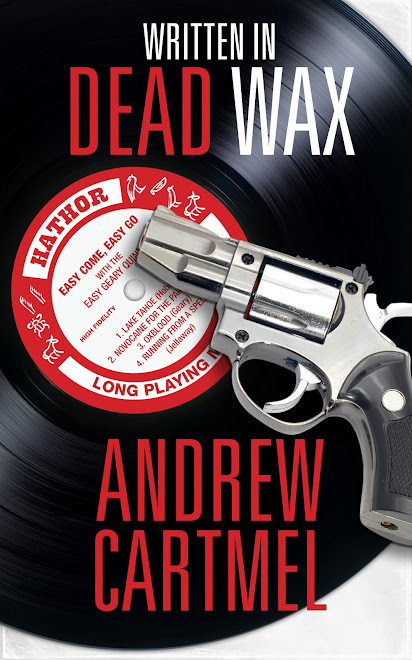 It comes as something of a relief to have read a Dick Francis novel which I can't immediately recommend as a flawless small masterpiece.
It comes as something of a relief to have read a Dick Francis novel which I can't immediately recommend as a flawless small masterpiece.Rat Race is very good indeed. As with Smokescreen he refreshes the horse racing mileiu by making his hero peripheral to it — in this case he is the pilot of a small plane that carries trainers, owners and jockeys to the race tracks. And the flying world is beautifully evoked.
But Rat Race comes with a couple of semi-fatal flaws.
Both of these flaws relate to a character called Chanter (great name). Chanter is a hippie art teacher who is in the book as a spoiler for Nancy, who is the object of Chanter's affections as well as the hero's.
Now, Chanter is an interesting and amusing character.

He wears utterly outlandish costumes (one described as a "dark green chenille table cloth" with a hole in it for his head), which stretch the bounds of crediblity.
But, despite that, he's surprisingly three dimensional. A big boost to this feeling of reality is the fact that Nancy doesn't entire abjure his attentions and even, on some level, fancies him a little. Plus the fact that Chanter "really can draw".
No, the problem with Chanter is the way he talks.
I first noticed this issue in Smoke Screen with a young American character. Now, normally Dick Francis's dialogue is spot on.

Besides being vivid, amusing and informative it is also authentic. Hs horse-racing people, film makers and (in this novel) aviation folk all speak in an utterly convincing way.
I assume this is because Francis had a chance to observe such people, and listen to them, at close quarters. Not so with Americans and hippies, sadly.
The American in Smokescreen kept saying things like "sure" and "" in exactly the way that real Americans don't. (The way to nail American dialogue is to have them say things like "gotten" where an Enlgishman would say "got". The great Nigel Kneale knew this.)

And here Chanter says things like "You're a drag, man. I mean, cubic". Now, it's not impossible that such things were uttered at times by real live hippies. But they much more often came out of the mouths of dreadful cardboard stereotypes.
Strictly from Cliché City, man. Or should I say Trope Town?
Anyhow, this is the only Achilles heel I've detected so far in the writing of Dick Francis, who remains a genius and my hero.
There is one more problem with Rat Race, though.
 This also relates to Chanter. What happens is that our hero and the alluring Nancy are getting closer and closer to, ahem, consumating their relationship... when this is suddenly kibboshed by the sort of arbitrary and far fetched misunderstanding which is a staple of bad romantic fiction.
This also relates to Chanter. What happens is that our hero and the alluring Nancy are getting closer and closer to, ahem, consumating their relationship... when this is suddenly kibboshed by the sort of arbitrary and far fetched misunderstanding which is a staple of bad romantic fiction. So she runs off (we think) with Chanter for a while, before everything is sorted out and normal service is resumed.
I would by no means advise you to steer clear of Rat Race just because of these minor imperfections.
 The book also features the most sustained and nail-biting setpiece of suspense writing I've encountered in the novels of Dick Francis (and possibly anywhere). I'll only tell you that it involves an airplane.
The book also features the most sustained and nail-biting setpiece of suspense writing I've encountered in the novels of Dick Francis (and possibly anywhere). I'll only tell you that it involves an airplane.There are also the breathtaking sudden moments of unexpected violence. Francis really is a master of the form. And here he breaks new ground with his beautifully realised evocation of pilots and flying.
Despite the Chanter factor, I found Rat Race so gripping that I almost missed my station while reading it on the train.
(Yet again we have the admirable Jan-Willem Hubbers to thank for the stylish cover that begins this blog, with the photo by Colin Thomas. the Dick Francis Library cover is from Waterstones. The dynamic image photo image of the jockeys racing is from Fantastic Fiction. The green bomb cover is from Biblio Dot Com. The very nice first edition cover is again from Ash Rare Books. The painted cover is by Greg Montgomery and is from the artist's own website.)




No comments:
Post a Comment